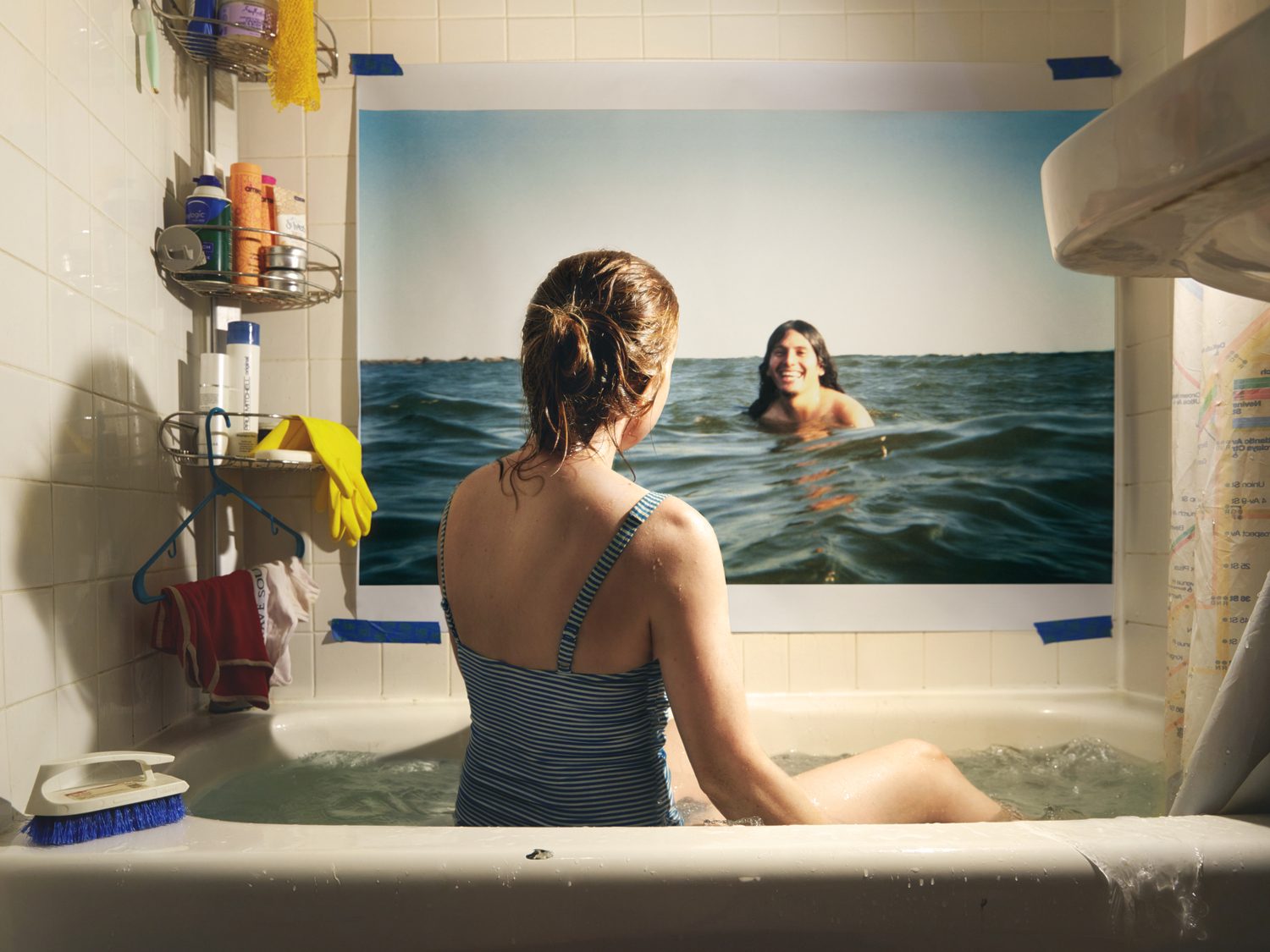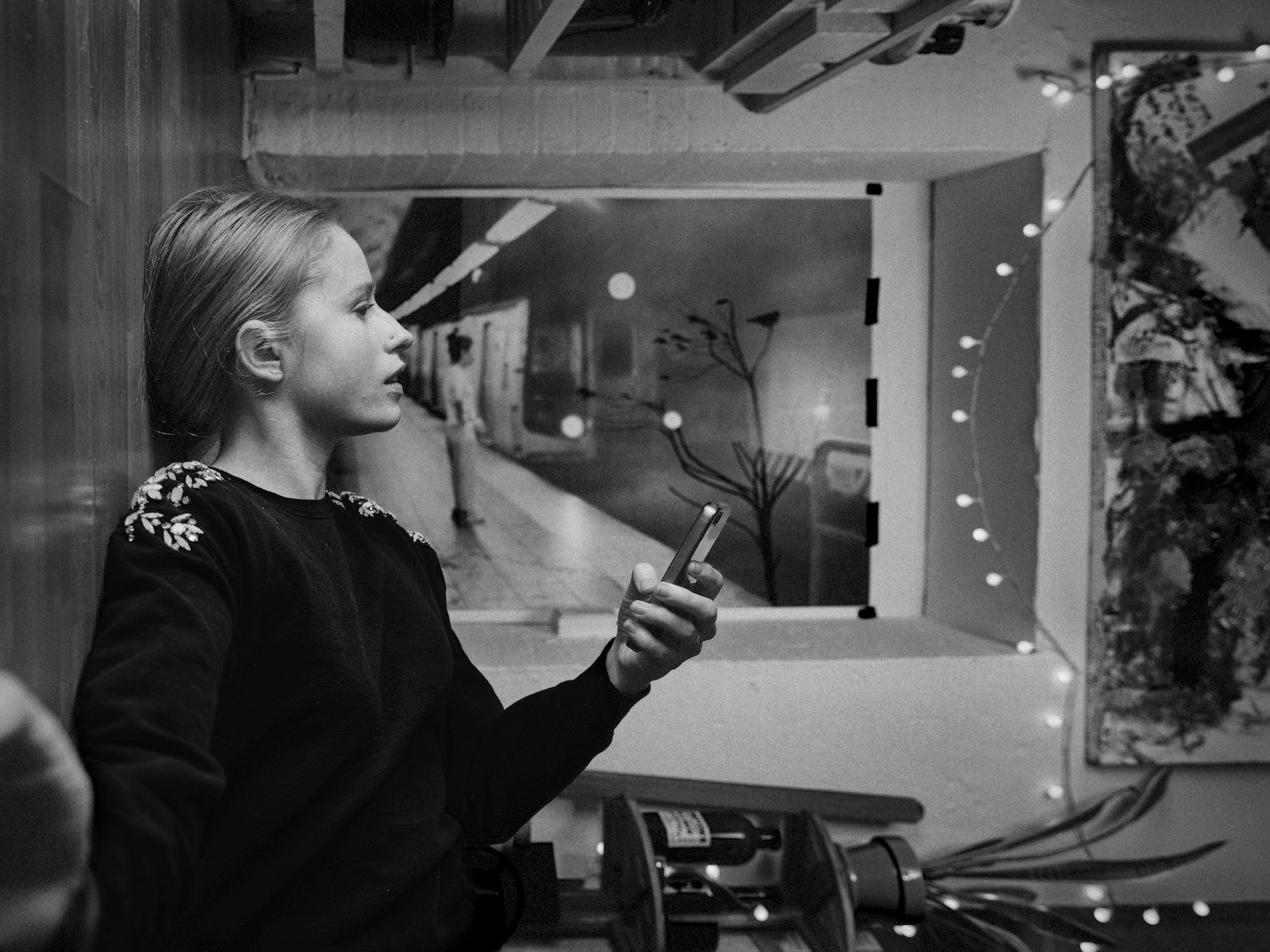For the image Nostalgia In the Backyard, photo-based artist Alison Luntz hung a landscape she shot in rural Peru against her garden fence. Posed against this backdrop, with her downstairs neighbor’s garden hose in hand, the artist playfully straddles the past and present. This image is a part of the artist’s ongoing self-portrait series In Spirit, which she began working on last Spring to address her feelings of confinement and isolation during quarantine.
LensCulture Art Photography Awards jury member Michael Foley selected Luntz’s series for special distinction stating, “Alison has found a way to soothe her pandemic blues by bringing together the limitations of her current moment with the freedom of former ones, chock full of warm feeling, fond memories, and simpler times. I admired her DIY aesthetic of sharing these photographic memories, casually taped and pinned in her everyday environment. Their humour does not belie the poignancy of the wanting and longing that we all feel right now. In a sea of photographers looking at their pandemic lives, Alison delivers something fresh, relatable, and exquisite.”
In this interview for LensCulture, Alison speaks to Liz Sales about her unique strategy for picturing quarantine and ways her newfound style of image-making might live on in a post-pandemic world.

Liz Sales: I was wondering if you could tell me a bit about the origin of your project?
Alison Luntz: This project started as a bit of a visual joke. There is a large print of a landscape photograph I shot in Scotland hanging across from my bed. In the early days of the pandemic, I looked at this picture every day and remembered the feeling of being there, the freedom and high spirits of that trip. And how remote it now seemed. So last April, driven mostly by restlessness and a sort of bleak humour, I shot a self-portrait using this print as a backdrop.

In the cropped version, I appear to be back there with the wind blowing in my hair; however, it is clear that I am really just at home, like everyone else in the wide version. After making that image, I began to see the potential power of this idea to express the isolation, alienation, and melancholy of quarantine—something both personal and pervasive. From there, the project slowly became less literal, less about physical places I missed, and more about feelings, memories, and the space between what is real and what is in our heads.

LS: What was your image-making process like?
AL: There are a few different ways I approached making the images in this project. Sometimes, I would pick a location in my apartment that I wanted to use as the stage for a story. For example, back in May, I had the idea to use my bathtub as a setting for a shot. I wanted to show another body of water there, and I remembered a favourite image of my husband—shot with a waterproof camera at Coney Island in 2015—and used that as the backdrop.
Although he was with me in quarantine in person, what I wanted to express here was the feeling of longing itself, of looking back on a happy memory with someone you love, and wishing you could relive it. Though this series centres on my own snapshots and experiences, I think what interests me most is finding the ways in which they are universal.

LS: Are all the prints you used as backdrops in your set-ups from your personal archive?
AL: All but one—a collage that uses historical images. I mentioned that sometimes these images would start with a location in my apartment. Other times, I would start with an image from my archive. As a quarantine project, I was organizing and rescanning my negatives, and when I found a photograph that spoke to me, I would print it and stage myself in front of it.
For example, I knew I wanted to include an image of my parents in this series to speak to my own ache at our separation and illustrate one of the most common and painful aspects of this pandemic—the way it has divided families. So I used an image of us celebrating Thanksgiving together in 2015, in my childhood home, and posed with them in my own kitchen last summer. My parents set a much more elaborate table than I do, and although theirs has never really been my style, there was a warmth and richness to those holidays at home that I felt the lack of. I wanted to capture the loneliness of setting such a bleak spread.

LS: One of the things I appreciate about this series is your technical precision. In each, the perspective and lighting in your final composition have a well-considered relationship to the background image. Was this a part of your selection process as well?
AL: I looked for images I thought might create a sort of tension between my present life in quarantine and my past pre-pandemic life to tell a meaningful story. However, these images also had to work on a technical level. My apartment is pretty tiny, so finding images that I could work with in terms of matching the perspective and quality of light was time-consuming.

LS: That makes me think of the image of you laying on print of a grassy field, surrounded on all sides by apartment life.
AL: That is me on my living room floor in spring 2020, on a snapshot of sun-dappled grass from summer 2019. After the initial iterations of me standing in front of an image, I wanted the series to continue to feel fresh, with new things to discover in each image. Playing with perspective was vital because it helped me draw a sharp contrast between the printed image and space. I’m hoping to put a print on the ceiling; I need to figure out the logistics of that.

LS: It sounds like this project is in-progress. What might we expect to see next?
AL: Even though the pandemic was the catalyst for this project, I’ve come to feel that much of what I’m seeking to capture—the contrast between inner and outer life, the feeling of longing and disconnection, the capacity for fantasy—are abiding parts of being human. The pandemic heightened everything and brought so much to the surface, but people’s heartaches and hopes remain as it slowly recedes. I think that’s what I’ve been responding to most keenly, and I hope I’ve made images that are meaningful even without the context of the pandemic to frame them. There’s more I want to say on these themes, and I’m also hoping to shoot portraits of other people using this format to explore something personal about them.
Editor’s note: In Spirit was a winner in the LensCulture Art Photography Awards 2021. To discover more amazing projects, check out the rest of the winners! And if you are making some of your own creative photographs in and around where you live, please participate in the Home ‘21 International Photography Prize — accepting entries until 21 April 2021.













